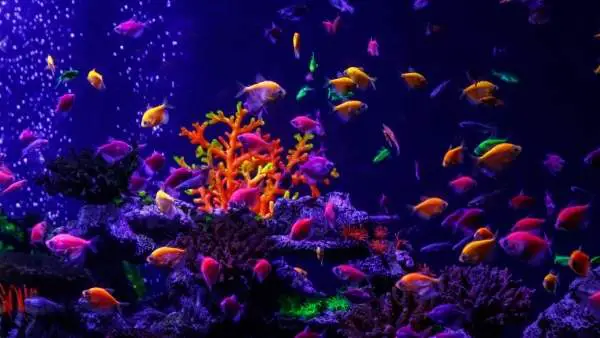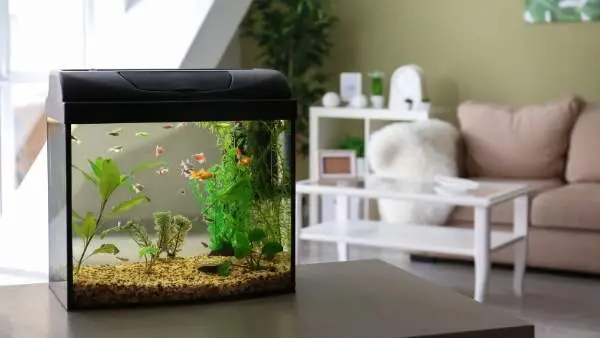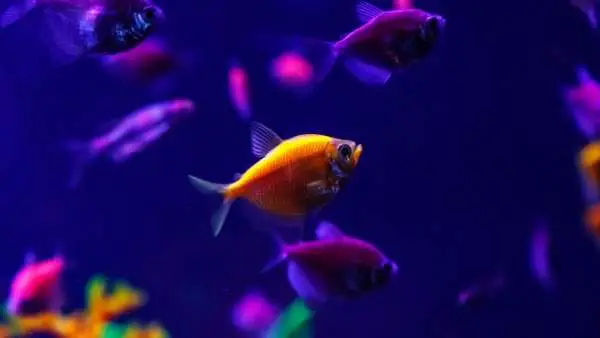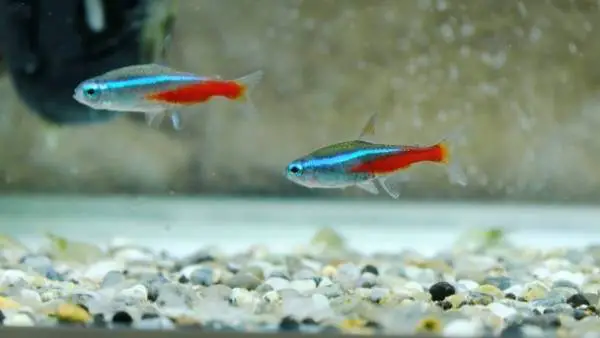Tetras are brilliant tropical freshwater fish and have been incredibly popular since the hobby's inception. Typically, in the wild tetras reside in rivers and streams with a light constant water flow. Also in the wild, tetra only breed during the rainy season; however, in captivity, they can breed all year round, provided that all of their requirements are met.

It is not necessarily hard to get your tetra fish to breed when in captivity; however, what is difficult, is to keep the tetra fry alive once they have spawned.
Monitoring and protection should be your two main priorities upon the arrival of your baby tetras, making sure that they are safe and healthy enough to grow up big and strong.
Ultimate Care Guide for Tetra Fish Babies
If you wish to successfully breed tetras, you must take full responsibility for their upbringing upon hatching into little baby fry. Caring for them whilst they are babies is so important as tetra parents tend to just let their fry get on with it once they have hatched, which typically leads to a lot of early casualties.
By following the steps in this guide you will be providing the best opportunity for your tetra fry to live until adults.
Separate Tetra From Their Fry
Unfortunately, much like guppies savage behavior, tetra fish do harm their own fry. The majority of fish species, freshwater, and saltwater alike look after their babies upon hatching or spawning, but not tetras, in fact, tetra will occasionally eat their own fry!

This is why it is up to you to ensure the livelihood of these tetra babies, becoming their adopted parent if you will. It certainly helps if you have a separate breeding tank for your tetra babies to go where they will not be under any stress or threat from their parents or other tank mates.
As long as you ensure the temperature and pH levels are what is required, your tetra eggs can be placed in a separate tank almost immediately.
Egg Protection
By providing extra bare gravel substrate on the bed of your tank, you will be helping with hiding the eggs from their parents. The only problem with this method is that it can be difficult to locate and gather the eggs from the substrate, especially if they are of similar color. It will be easier to locate the eggs against a black or very dark substrate.
You can also introduce live plants to help protect the eggs as they will likely fall on top of them and stick to them. Additionally, you can add extra decorations in the form of rocks and caves for the eggs to fall on or into.
Correct Filtration
Choosing the right filtration is seriously important when it comes to setting up your tetra fry fish tank. Tetra fish babies are seriously small, so therefore you should never have a filter that contains small holes that your baby tetra can fit inside.
Also, you should avoid filters that produce too many small bubbles in the tank water, this can get trapped underneath their growing scales and cause some serious damage.
Using sponge filters is a good idea, they can provide both mechanical and biological filtration, which helps tremendously when cleaning the fish tank and maintaining cleanliness. These filters are also totally safe for your tetra baby, by not creating a strong suction or hurting your tetra baby.
Keep Them In The Dark
Once the female tetra has laid their eggs, you should turn off any artificial lights, you can also cover the tank with a towel to avoid any lighting coming in from above. There are many hobbyists that advise keeping the lighting to a minimum when it comes to baby tetras.

Too much light exposure can lead to bacterial infections in the water and also fungal development in the eggs. It may not seem like the number one priority, but this step is certainly worth doing properly.
Ensure Your Tetra Feel Safe And Secure
Tetra babies will usually feel pretty stressed out upon spawning, which usually leads them to hide in various places around your tank, this is a natural instinct of theirs.
This is why it is important to populate your tank with plenty of safe hiding spots to help relieve stress for them. The only issue with this is that your tetra fry will become a bit less visible due to the amount of stuff in the tank, but sometimes that is not a bad thing.
Tetra Fry Food
How long does it take for tetra fry to grow? After the eggs have hatched, it usually takes a couple weeks for the baby tetra to begin swimming freely around the tank and by approximately 6 months, they will be fully grown.
Once your tetra fry begin to swim around, you will need to provide them with food as that is what they will be searching around for. Feeding your babies a couple of drops of infusoria twice a day is a good start.

There are some types of tetra fish that have large and aggressive fry, if this is the case then you can begin feeding them brine shrimp straight away. If not, then it is important to feed your fry small edible pieces of food.
Micro-worms are a great food source for your tetras, especially for their first couple of months, helping grow them into strong, healthy fish.
Maintaining Good Water Conditions
Fish fry of any kind are pretty fragile and require a lot of attention, and so their water conditions are so incredibly important as sudden shifts in temperature and water quality can be incredibly detrimental.
Maintaining consistency within your water conditions and tank setup is needed when ensuring a healthy and happy life for your tetra fry. They are incredibly sensitive to change, which is why constant maintenance and water checks are required even more.
Conclusion
Caring for tetra fry is certainly no easy task, you must maintain a perfect environment for them to survive and live a healthy life. By putting a serious emphasis on feeding and keeping your fry safe you will all but ensure this.
Unfortunately, tetra have gained a reputation for eating their young, and it is up to you to prevent this from taking place by following this guide.

